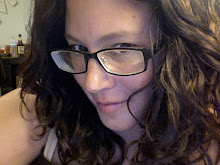
This weekend, I re-read Running With Scissors. A vaguely salacious and gossipy book by Augustine Burroughs, it is, nonetheless filled with razor-like observations and humor. It takes the horrifying and renders it into hilarity.
In the book, one of the coping mechanisms the Hope character uses to deal with her family’s nutty home life are Bible Dips. Basically, ask a question, and then open the Bible, point to a word, and “interpret” it.
In that same absurdist spirit, I decided to let (my recently relocated) copy of Art-as-Art, The selected writings of Ad Reinhardt flop open to a random page.
It opened to:
AN ARTIST,
A FINE-ARTIST OR
FREE-ARTIST
An artist, a fine-artists or free artists,
An artist-as-artist
Has always nothing to say,
And he must say this over and over again.
Especially in his work
What else is there to say?
In work or words
What in hell, on earth, or in heaven, is an artist up to when he says he has something to say?
All artists-as-artists say the same thing
The post-historic artist is the timeless artist-as-artist.
The artist-as-artist is the post-historic artist.
The post-historic artist is the artist aware of himself as artist, aware of art-as-art, aware of everything that is not art, inside or outside art.
The only way to say what an artist-as-artist is is to say what an an artist-as-artist is not.
A fine artist by definition is not a commercial or industrial or fashion or applied or useful artist.
A fine, free or liberal or abstract artist is by definition not a servile or professional or meaningful artist.
A fine artist has no use to use, no meaning for meaning, no need for any need.
A fine artist has nothing to use, has no need for any meaning, and would not use himself or his work for anything.
A fine artist by definition does not use or need any ideas or images, does not use or need any help, cannot use or help anyone or anything.
Only a bad artist thinks he has a good idea.
A good artist does not need anything.
*italics are according to the book, which was edited by Barbara Rose.
** though I do not agree with many of his tenants, I find Reinhardt endless fascinating for his output, and his humor.

5 comments:
i just love that book...i forgot about that awesome part.
"Only a bad artist thinks he has a good idea"
THAT as well as everything else- AWESOME!
If one studies the Tao,
he will find similar truths.
The statement:
"Only a bad artist thinks he has a good idea.
A good artist does not need anything.
It is my belief this is true.
If an artist needs something,
he creates it
Chris
Chris,
Ad was actually hugely involved in and interested in Eastern thought, specifically those ideas surrounding Ankor Watt...in fact, before he started his Black Paintings series, he went o Cambodia to visit...and from what I can tell, it really reinforced and helped to articulate many of the thoughts he was already moving towards...
It was apparent, the feel was
the same.
His meaning, in a way was that
if your life is lived consistently,
all is art.
If you follow that train of logic
purely and simply, it is my belief
that there is no reason to state
the obvious...
I have spent time in Asia, and not
as a tourist, but an intermittent
resident, the vibes are different
and are there is much that a
person who grew up in the Midwest
can learn there, we get programmed by nature, nuture, and nossir!
If we can avoid the rigidity and
narrowness of thinking and focus that such an environment produces in most that are products of "The System", then the sky is the limit.
His pronouncement:
"The Artist has nothing to say"
is of course true.
His work says it.
Chris
Post a Comment